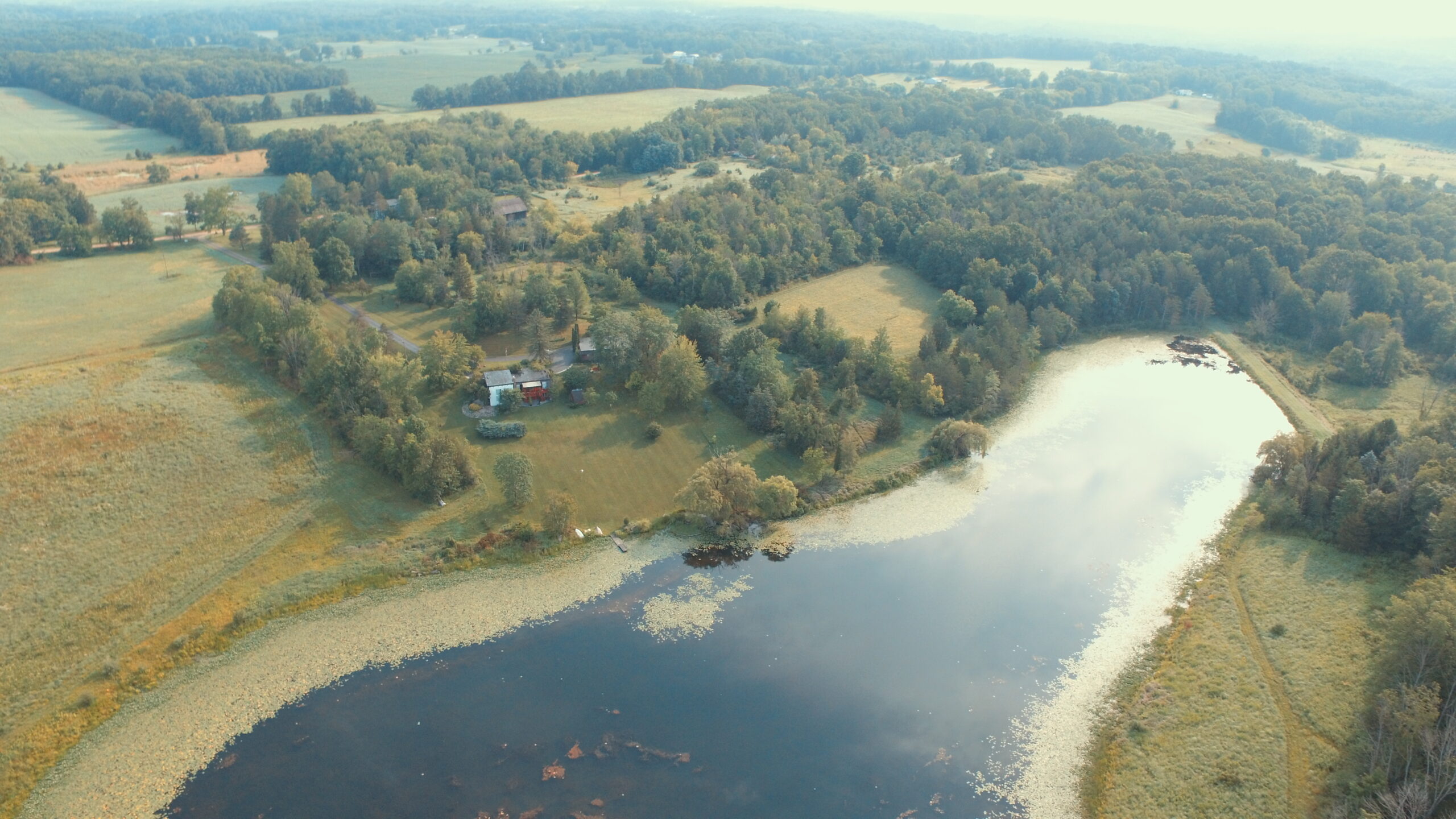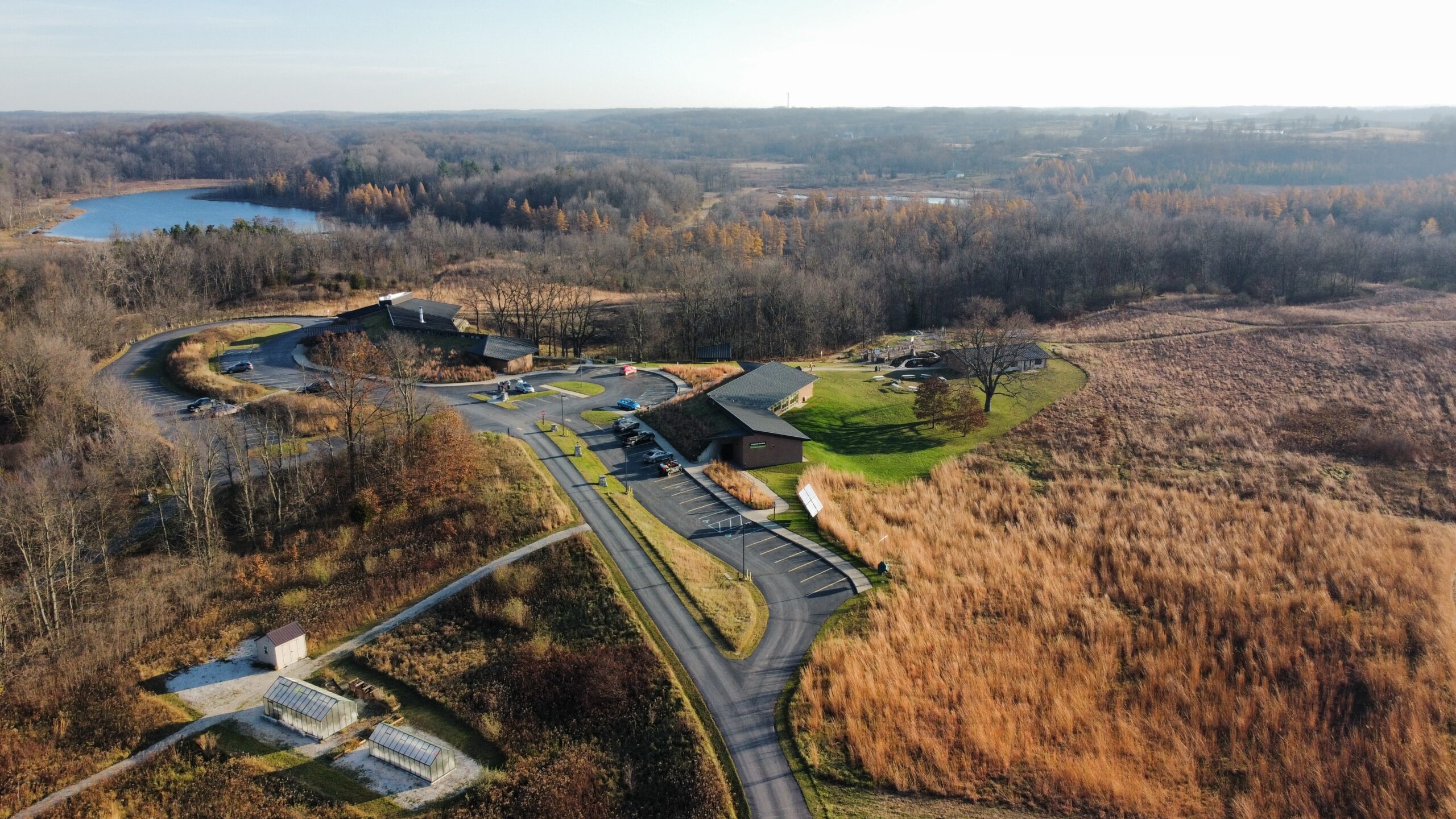Pierce Cedar Creek Institute is home to a wide variety of natural communities, including re-constructed prairies, successional forests, mature oak/hickory and beech/maple forests, hardwood and conifer swamps, marshes and prairie fens, These communities support several species listed on state or federal “endangered,” “threatened” or “special concern” lists.
Climate Resilient Land Management (CRLM)
CRLM is a work plan for the long-term health and resiliency of the Institute's natural areas in response to the threats posed by climate change.
The effects of climate change are accelerating, posing increased threats to the Institute's natural areas and presenting a pressing need to reevaluate practices in light of the Institute's current land management plan. With the CRLM program, the Institute aims to first test these emerging practices on a small scale and document, monitor, and evaluate effectiveness and success to inform our property-wide management.
To implement CRLM, the Institute requires funds to continue building capacity, purchase the necessary equipment and materials for conducting and monitoring the effects of more intensive land management efforts, and develop and deliver educational programming.
Your CRLM donation demonstrates your dedication to fostering a healthier and more resilient future for our community. It represents an investment in hands-on learning and the necessary educational programs to increase our impact. By choosing to support CRLM, you are actively embracing the role of a change agent in our community.
To understand the impact of their donations, CRLM donors will receive an environmental report outlining advancements in key metrics. To give, please visit http://weblink.donorperfect.com/crlm.
If you are interested in becoming a CRLM sponsor, please contact us at info@cedarcreekinstitute.org or 269-721-4190 for more information. Together, we will create a healthier, more resilient future!
Water Quality Conservation
Pierce Cedar Creek Institute's watershed conservation involves collaborative efforts to assess, protect, and sustainably manage the health of our water resources for long-term environmental well-being.
Cedar Creek winds its way through central Barry County and is one of the defining features of the Institute’s 850 acre property. Cedar Creek is a pristine and natural waterway whose shores and waters harbor many wildlife and plant species that are symbols of our native landscape. Brewster Lake is a pristine lake notable for its lack of non-native aquatic plants and fish species and lies entirely within the Institute’s property.
Current and future threats to water quality within the Cedar Creek watershed led the Institute and its partners to secure grant funding through the Michigan Department of Environment, Great Lakes, and Energy’s (EGLE) Nonpoint Source Program from the United States Environmental Protection Agency (USEPA).
Click below to learn more about the Cedar Creek Watershed Management Plan.
Cedar Creek Watershed Management Plan
The Barry County Water Quality Monitoring Program (BCWQMP) started in 2022 to support lake residents and community members in actively promoting inland lake health by monitoring water quality to track changes in lake health over time. Pierce Cedar Creek Institute is partnering with Michigan Clean Water Corps (MiCorps) and their Cooperative Lakes Monitoring Program to train volunteers to collect water quality measurements in their lakes, learn more about lake health and water quality issues in the area, and bring together the residents of Barry County to share water quality data and collaborate on water resource conservation and protection. Pierce Cedar Creek Institute is currently seeking volunteers to help us monitor water quality on a few Barry County lakes, with comprehensive training and equipment provided. If you would like to help, please see our Volunteer + Stewardship webpage.
The Institute also is partnering with the Barry Conservation District and MiCorps with their Volunteer Stream Monitoring Program to recruit and train volunteers to track stream health in the Thornapple River Watershed. Volunteers collect and identify macroinvertebrates as water quality indicators and assess shoreline habitat in wadable streams and rivers every spring and fall. Find out more about this program at https://www.barrycd.org/waterways/water-quality
Learn more about the Barry County Water Quality Monitoring program here from our student videos.
Restoring Ecological Integrity
Stewardship efforts are focused on identifying and integrating land management practices that promote biodiversity and resilient natural communities. Additionally, we actively share our findings with local landowners and conservation organizations in our region.
We work to promote natural processes such as fire; limit spread of invasive pests, pathogens, and plants; and incorporate biological field station and research findings into land management practices.
Prairie and Savanna Conservation
Southwest Michigan historically had an abundance of fire dependent plant communities such as prairies, oak openings, barrens, prairie fens, and oak woodlands. Historical fires occurred from lightning strikes, but more commonly from Native Americans that lived in the area. Due to widespread fire suppression and land conversion to agriculture, many of these fire dependent plant communities have been degraded or destroyed. Today only 2% of remnant prairies and savannas persist in southern Michigan.
Since purchasing the property in 1998, the Institute has converted acres of agricultural fields into tall and short grass prairie. These prairie re-creations provide educational references, and research hot spots, all while providing habitat for pollinators, grassland birds, and other prairie species.
Wildlife Conservation
Pierce Cedar Creek Institute strives to maintain balance in our natural communities, including the health of wildlife populations. For rare and threatened species, such as Eastern box turtles and Eastern massasuaga rattlesnakes, the Institute conducts annual surveys and assessments to track populations and assess habitat needs. For overly abundant species, such as the white-tailed deer, the Institute follows guidelines to reduce populations to a heathy threshold. This results in increased individual health, reduced disease transmission, and maintains quality habitat.
Bird Monitoring
As a result of the wide variety of high-quality natural areas, the institute is home to a diverse range of bird species. These bird populations are frequently monitored by the Barry Country Bird Club and updated lists are provided on eBird.
Additionally, the Institute’s work in prairie restoration benefits several bird species including the bobolink, savanna sparrow, and henslow sparrow – all of which rely on large grasslands for breeding.
The Institute also uses bird boxes and houses to promote successful rearing efforts for Purple Martins and Eastern blue birds. These houses serve as excellent educational tools for showcasing fledgling biology and engaging volunteers in appropriate wildlife husbandry.
Click here to view volunteering opportunities at the Institute.
Pollinator Conservation
Insects play a critical role in our natural communities as they are essential in nutrient cycling, pollination, and decomposition of plant and animal matter. Insects also serve as predators of pests and indicators of a high-quality natural community. Additionally, insects and pollinators are a critical food source for birds, herptiles, amphibians, and small mammals. However, insects and pollinators are in rapid decline due to habitat loss and the widespread use of insecticides for agriculture.
Pierce Cedar Creek Institute's recreated prairies and native plant installations on the Visitor Center and Education Building provide refuge and year-round habitat for insects and pollinators. Insects are able to overwinter in casing and stems on the dried plant material, and emerge in the spring.
From spring through fall, these areas have a diversity of wildflowers and always something in bloom. Many of these wildflowers, like native species of milkweed and mints are considered super pollinator plants as they have abundant nectar and resources for a wide variety of insects and pollinators.











